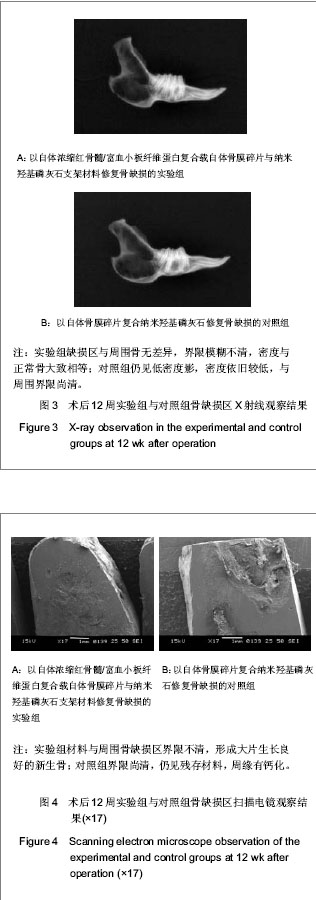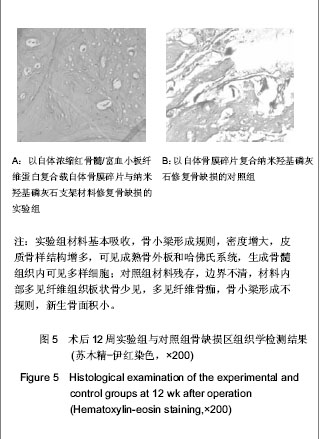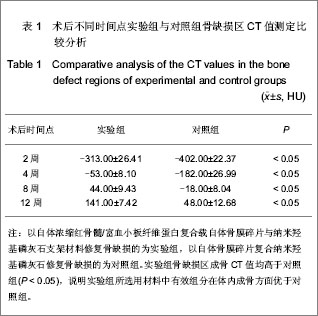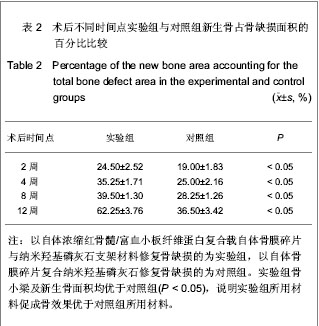| [1] Dohan DM,Choukroun J,Diss A,et al.Platelet-rich fibrin (PRF):A second-generation platelet concentrate.Part II:Platelet-related biologic features.Oral Surg Oral Med Oral Pathol Oral Radiol Endod. 2006;101(3):E45-50.
[2] Simonpieri A,Del Corso M,Sammartino G,et al. The relevance of Choukroun's platelet-rich fibrin and metronidazole during complex maxillary rehabilitations using bone allograft. Part I: a new grafting protocol.Implant Dent.2009;18(2):102-111.
[3] Lundquist R,Dziegiel MH,Agren MS. Bioactivity and stability of endogenous fibrogenic factors in platelet-rich fibrin..Wound Repair Regen.2008;16 (3):356-363.
[4] Simonpieri A,Choukroun J,Del Corso M,et al. Simultaneous sinus-lift and implantation using microthreaded implants and leukocyte-and platelet-rich fibrin as sole grafting material: a six-year experience.Implant Dent.2011;20(1):2-12.
[5] Xie MM,Zhao BD,Wang WY,et al. Zhongguo Zuzhi Gongcheng Yanjiu yu Linchuang Kangfu. 2010;14(16): 2911-2915.谢苗苗,赵保东,王维英,等.口腔修复膜材料在牙种植中引导骨再生的效应[J]. 中国组织工程研究与临床康复,2010,14(16): 2911-2915.
[6] Soltan M,Smiler DG,Gailani F.A newplatinumstandard for bone grafting:autogenous stem cells.Implant Dent.2005;14 (4):322-325.
[7] Hernigou P, Poignard A, Manicom O, et al. The use of percutaneousautologous bone marrow transplantation in nonunion and avascularnecrosis of bone.J Bone Joint Surg Br.2005;87(7):896-902.
[8] Yeo C,Saunders N,Locca D,et al.Ficoll-Paque versus Lymphoprep:a comparative study of two density gradient media for therapeutic bone marrow mononuclear cell preparations.Regen Med.2009;4(5):689-696.
[9] Zhang YC,Wu LM,Liu GH,et al.Linchuang Yiyao Shijian. 2010; 19(16):1044-1046.张远成,吴立明,刘国辉,等.自体骨髓干细胞移植在治疗骨不连中的疗效观察[J]. 临床医药实践,2010,19(16):1044-1046.
[10] Sun QZ,Yan HY,Wang P,et al.Zhongguo Xiandai Yixue Zazhi. 2002;12(12): 25-27.孙庆仲,闫红艳,王鹏,等.自体骨膜细胞及红骨髓经皮注射修复骨缺损的实验研究[J].中国现代医学杂志,2002,12(12): 25-27.
[11] Zou GY,Jiang F.Guangxi Yike Daxue Xuebao. 2003;20(1): 64-66.邹国耀,江峰.自体游离骨膜骨髓自固化磷酸钙复合移植治疗节段性骨缺损的实验研究[J].广西医科大学学报,2003,20(1): 64-66.
[12] Ouyang L,Wang J.Hangkong Hangtian Yiyao. 2009;19(8): 59-60.欧阳林,王健.自体骨髓移植治疗骨折延迟愈合与不愈合的疗效观察[J].航空航天医药,2009,19(8):59-60.
[13] Betz OB,Betz VM,Abdulazim A,et al.Healing of large segmental bone defects induced by expedited bone morphogenetic protein-2 gene-activated, syngeneic muscle grafts. Hum Gene Ther.2009;20(12):1589-1596.
[14] Lacerda SA,Lanzoni JF,Bombonato-Prado KF,et al. Osteogenic potential of autogenous bone associated with bone marrow osteoblastic cells in bony defects: a histomorphometric study. Implant Dent.2009;18(6):521-529.
[15] Yin SC,Jiao ZH,Wang GG,et al.Zhongguo Zhongyi Gushangke Zazhi. 2011;19(6):23-24.尹世昌,焦振华,王功国,等.浓缩自体骨髓移植配合中药治疗骨不连临床研究[J].中国中医骨伤科杂志,2011,19(6):23-24.
[16] Yao WX,Ma A,Zhu LL,et al.Zhongguo Yixue Kexueyuan Xuebao. 2011;33(4):387-392.姚旺祥,马安,朱六龙,等.浓缩自体骨髓复合纤维蛋白胶修复兔桡骨陈旧性骨缺损[J].中国医学科学院学报,2011,33(4):387-392.
[17] Lee K,Goodman SB. Cell therapy for secondary osteonecrosis of the femoral condyles using the Cellect DBM System: a preliminary report.J Arthroplasty.2009;24(1):43-48.
[18] Pei M,He F,Boyce BM,et al.Repair of full-thickness femoral condyle cartilage defects using allogeneic synovial cell-engineered tissue constructs.Osteoarthritis Cartilage. 2009; 17(6):714-722.
[19] Fu ZC.Yatai Chuantong Yiyao. 2011;7(4):4-5.付振才.复合PRP联合bBMP组织工程骨修复兔桡骨缺损的实验研究[J].亚太传统医药,2011,7(4):4-5.
[20] Choukroun J,Adda F,Schoeffler C,et al.Une opportunité en paro-implantologie: le PRF.Implantodontie.2000;42:55-62 .
[21] Cieslik-Bielecka A,Bielecki T,Gazdzik TS,et al. Improved treatment of mandibular odontogenic cysts with platelet-rich gel .Oral Surg Oral Med Oral Pathol Oral Radiol Endod.2008; 105(4):423-429.
[22] Wildemann B,Schmidmaier G,Brenner N,et al. Quantification, localization, and expression of IGF-I and TGF-β1 during growth factor-stimulated fracture healing.Calcif Tissue Int. 2004;74(4):388-397.
[23] Nakajima F,Nakajima A,Ogasawara A,et al.Effects of a single percutaneous injection of basic fibroblast growth factor on the healing of a closed femoral shaft fracture in the rat.Calcif Tissue Int.2007;81(2):132-138.
[24] Chang Y,Hsieh PH,Chao CC.The efficiency of Percoll and Ficoll density gradient media in the isolation of marrow derived human mesenchymal stem cells with osteogenic potential.Chang Gung Med J.2009;32(3):264-275.
[25] Sharma S,Garg NK,Veliath AJ,et al.Percutaneous bone-marrow grafting of osteotomies and bony defects in rabbits.Acta Orthopaedica Scandinavica. 1992;63(2): 166-169.
[26] Wang BL,Sun W,Shi ZC,et al.Treatment of nontraumatic osteonecrosis of the femoral head with the implantation of core decompression and concentrated autologous bone marrow containing mononuclear cells. Arch Orthop Trauma Surg.2010;130(7):859-865.
[27] Ma JT,Yu M,Zhang MC,et al.Clinical observation on percutaneous autologous bone marrow grafting for treatment of fracture nonunion.Zhongguo Gu Shang.2009;22(11): 862-864.
[28] Zhang M,Yang ZX,Shi ZY,et al.Zhongguo Linchuang Kangfu. 2005;9(30):75-77.张明,杨智贤,石展英,等.自体骨泥混入骨膜碎片植骨与单纯自体骨泥植骨修复骨缺损的效果对比实验[J].中国临床康复,2005, 9(30):75-77.
[29] Yang XM,Shi W,Du YK,et al.Zhongguo Xiufu Chongjian Waike Zazhi. 2009;23(10):1254-1259.杨新明,石蔚,杜雅坤,等.带蒂筋膜瓣包裹自体红骨髓接种的组织工程骨修复骨缺损的实验研究[J].中国修复重建外科杂志,2009, 23(10):1254-1259.
[30] Ueno T,Kagawa T,Fukunaga J,et al. Evaluation of osteogenic/chondrogenic cellular proliferation and differentiation in the xenogeneic periosteal graft.Ann Plast Surg.2002;48(5):539.
[31] Wang DX,Mou SL,Wang JR,et al.Zhongguo Jiaoxing Waike Zazhi. 2009;17(22):1735-1738.王代宪,牟淑玲,王建然,等.负载骨形态发生蛋白与血管内皮生长因子的超聚消旋乳酸修复兔桡骨缺损的实验研究[J].中国矫形外科杂志,2009,17(22):1735-1738. |




.jpg)
.jpg)
.jpg)